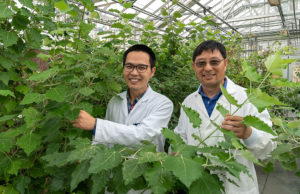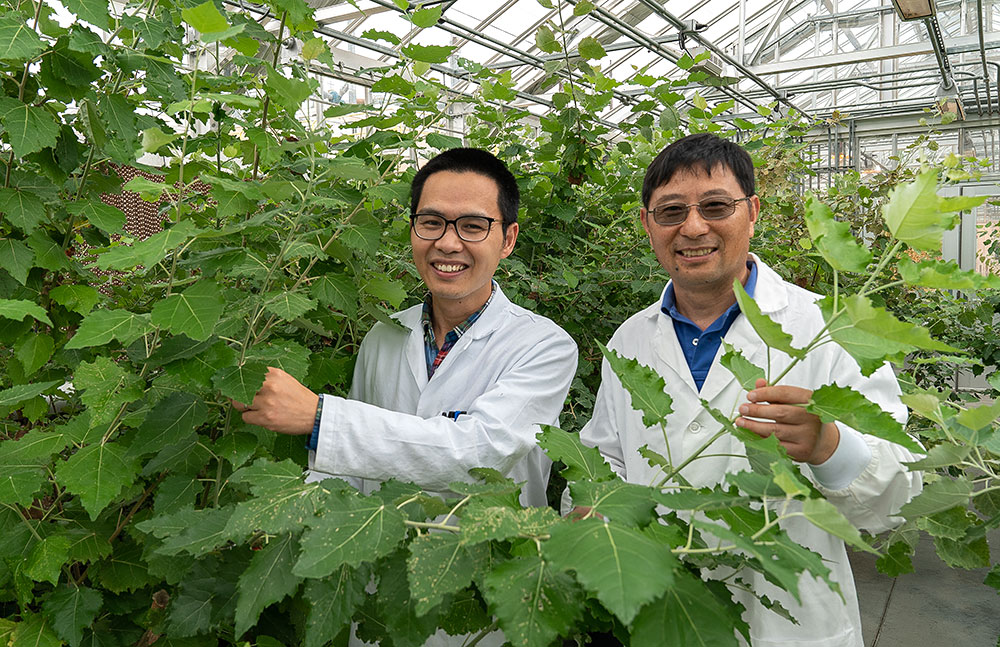
Postdoctoral fellow Yunjun Zhao, the first author on the paper, and Brookhaven Lab biochemist Chang-Jun Liu with poplar plants in the greenhouse at Brookhaven National Laboratory. (Photo Credit: Brookhaven National Laboratory)
A team of scientists, including Joint BioEnergy Institute (JBEI) researchers, studying the biochemistry of plant cell walls have identified an enzyme that could turn woody poplar trees into a source for producing a major industrial chemical. The research, recently published in Nature Plants, could lead to a new sustainable pathway for making “p-hydroxybenzoic acid,” a chemical building block currently derived from fossil fuels, in plant biomass.
“P-hydroxybenzoic acid is a versatile chemical feedstock. It can serve as a building block for making liquid crystals, a plasticizer of nylon resin, a sensitizer for thermal paper, and a raw material for making paraben, dyes, and pigments,” said Chang-Jun Liu, a plant biochemist at the U.S. Department of Energy’s Brookhaven National Laboratory, JBEI’s Scientific Lead of Cell Wall Biology and Engineering, and lead author on the paper.
The global market value of p-hydroxybenzoic acid stood at U.S. $59 million in 2020 and is projected to reach $80 million by 2026. But the current process for making this important chemical relies on petrochemicals. Its synthesis requires harsh reaction conditions (high temperature and high pressure) and has negative environmental impacts. Finding an economical and sustainable way to make p-hydroxybenzoic acid in plants could help mitigate environmental impacts and contribute to an emerging bioeconomy.
“We’ve identified a key enzyme responsible for the synthesis and accumulation of p-hydroxybenzoate (pBA)—the conjugate base of p-hydroxybenzoic acid—in lignin, one of three major polymers that make up the structural support that surrounds plant cells,” said Liu. “This discovery may enable us to engineer plants to accumulate more of this chemical building block in their cell walls, thereby potentially adding value to the biomass.
Read more on the JBEI website




